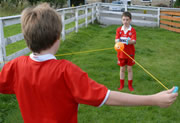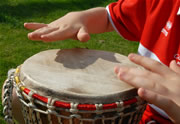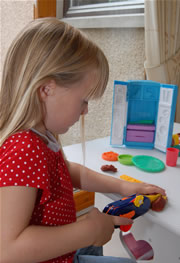motor skills
Developing Motor Skills - how to help your child to coordinate the two sides of their body together
 The information on this page is also available to download:
The information on this page is also available to download:
Why?
Some children have difficulties with activities that use both sides of their body together. These activities may help this. They are arranged in a normal developmental sequence.
Start at a level your child can do and move through the activities in order. Move onto the next section of activities when your child is confident and good at the movements.
You can probably think up new ideas and variations as you try them out.
Symmetrical – both arms or legs doing the same movement at the  same time
same time
- Jumping on a trampoline, over a line on the floor, on a space hopper, over a rope or in and out of a hoop
- Clapping games / rhythms, pat-a-cake type games 2 hands together
- Tapping a ball or balloon hanging on a string with a cardboard tube held at either end with both hands
- Trapping a ball rolled to the child between a pair of ‘scratch’ bats or plastic jugs
- Playing a drum with two hands together
Alternating – arms or legs moving one after the other
- Punching or kicking using a pillow or space hopper
- Tipping balls, water, sand or lentils back and forth from one jug to another

- Playing drum or xylophone
- Clapping games using both hands
- Tapping a ball or balloon hanging from a string with alternate hands – use a cardboard tube in each hand
- Plaiting wool, Scoobies or making paper concertinas
Reciprocal – 2 hands working together, each doing a different part of the task at the same time

- Paper tearing and folding, such as origami, paper mache
- Construction toys like K’nex, Meccano or Lego
- Plasticine or Play-Doh modelling
- Keyboard, recorder or other instruments that require 2 hands
